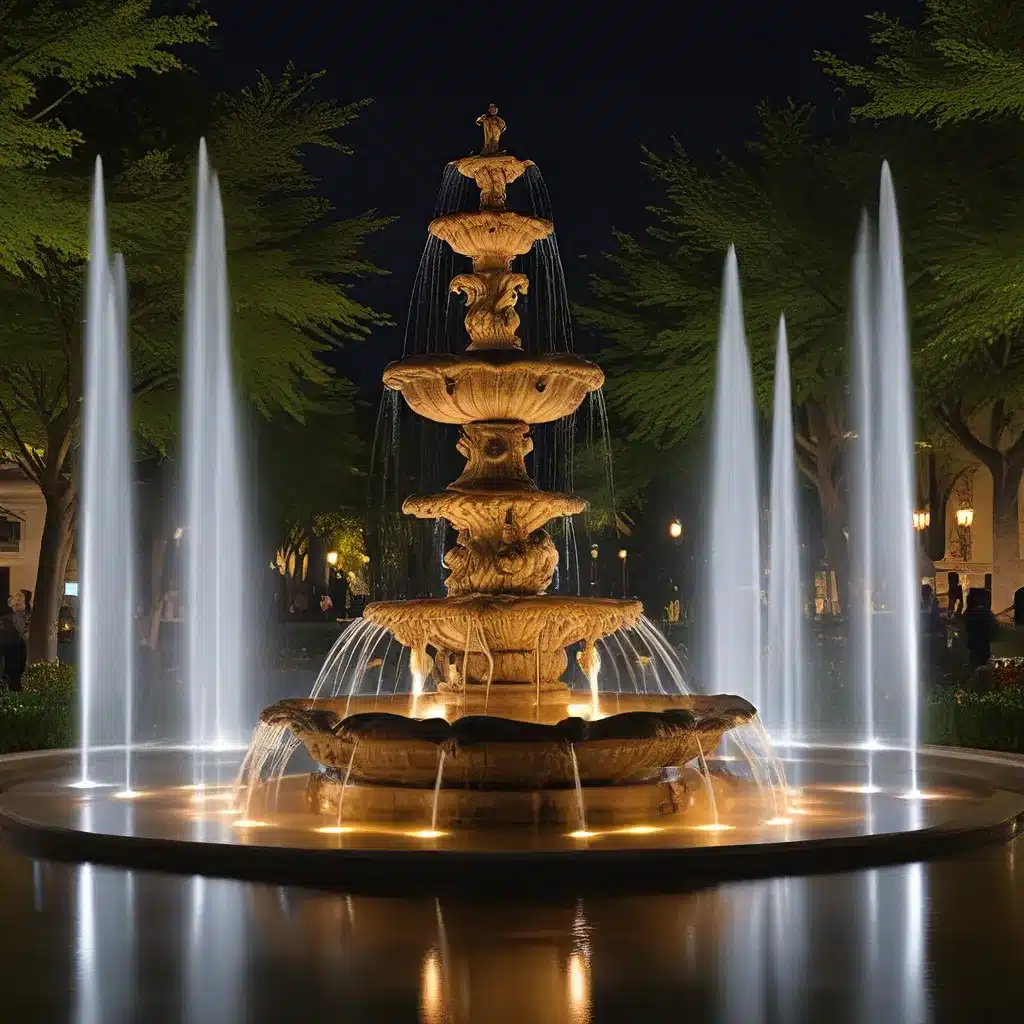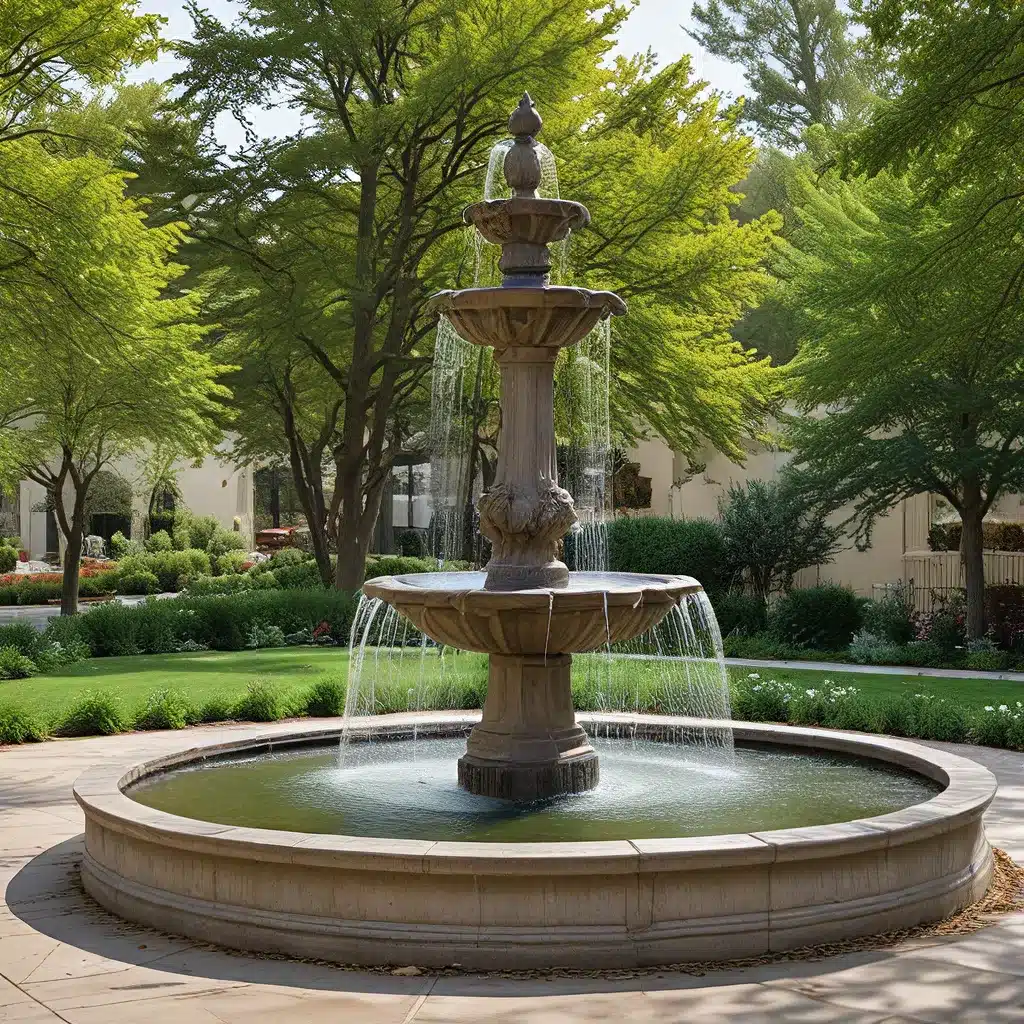
Fountain Design Essentials – Welcome to Fountain Lights
Fountain Design Essentials – Welcome to Fountain Lights

As an avid enthusiast of all things aquatic, I’ve always been fascinated by the intricate workings of fountain systems. From the mesmerizing displays of cascading water to the hidden complexities behind their operation, there’s a captivating world of engineering and science that often goes unnoticed. And when it comes to mastering the art of fountain design, the key lies in understanding the delicate interplay between pumps, nozzles, and the physics of fluid dynamics.
Let me take you on a journey through the realm of fountain specifications, where every measurement and calculation can make the difference between a stunning display and a lackluster disappointment. It’s a world where precision is the name of the game, and where a deeper appreciation for the science behind these captivating water features can unlock endless possibilities.
At the very core of any fountain system lies the pump, the unsung hero that breathes life into the entire operation. These remarkable machines are responsible for circulating the water, generating the necessary pressure and flow rate to create the desired fountain effect. But selecting the right pump for the job is no simple task – it requires a deep understanding of the water dynamics involved.
One of the crucial factors to consider is the flow rate, which determines the volume of water being moved through the system. This is typically measured in gallons per minute (GPM), and the right pump must be capable of delivering the required flow rate to ensure the fountain operates at its full potential. Underestimating the flow rate can lead to lackluster performance, while overestimating can result in wasted energy and unnecessary costs.
Another key specification is the pump head, which refers to the maximum vertical distance the pump can lift the water. This is particularly important for fountains with intricate designs or elevated water features, as the pump must be able to overcome the gravitational forces acting on the water. Selecting a pump with insufficient head can result in the fountain failing to reach the desired height or even falling short altogether.
Understanding the complex interplay between flow rate and pump head is essential for fountain designers, as they must strike the right balance to achieve the perfect water display. It’s a delicate dance, where even the slightest miscalculation can disrupt the entire symphony of cascading water.
While the pump may be the heart of the fountain, the nozzle is the true conductor of the performance. These intricate components are responsible for transforming the pressurized water flow into the captivating patterns and shapes we admire. The design and placement of the nozzles can make or break the visual appeal of a fountain, and it’s a realm where attention to detail is paramount.
One of the key considerations when selecting nozzles is the spray pattern, which determines the shape and trajectory of the water jets. From the classic v-shaped arch to the mesmerizing fan-like displays, each nozzle type has its own unique characteristics and suitability for different fountain designs. Understanding the technical specifications of nozzle types is crucial for ensuring the fountain’s visual impact matches the desired aesthetic.
Another crucial factor is the nozzle orifice size, which directly influences the water flow rate and pressure. Smaller orifices can create a more refined, delicate appearance, while larger ones can produce bolder, more dramatic effects. The interplay between nozzle design, orifice size, and pump specifications is a delicate balance that requires meticulous planning and testing to achieve the perfect result.
But the nozzle’s role extends beyond just the visual appeal – it also plays a crucial part in the energy efficiency of the fountain system. Proper nozzle selection and placement can significantly reduce energy consumption, ultimately contributing to the overall sustainability and cost-effectiveness of the fountain’s operation.
At the heart of any captivating fountain lies the intricate choreography between the pump and the nozzles. It’s a delicate balance where every component must work in perfect harmony to deliver the desired water display. And as a true fountain aficionado, I can’t help but be in awe of the thought and engineering that goes into this invisible dance.
Imagine the pump, the mighty heart of the system, steadily pushing the water through the network of pipes and valves. Meanwhile, the nozzles, the graceful conductors, receive this pressurized flow and transform it into a mesmerizing symphony of water, each one playing its part in the grand performance.
It’s a captivating interplay of physics and engineering, where the precise alignment of flow rates, pressures, and spray patterns can mean the difference between a stunning centerpiece and a lackluster disappointment. And as fountain designers continue to push the boundaries of what’s possible, I can’t help but wonder what new and innovative designs will emerge in the years to come.
As I ponder the ever-evolving world of fountain technology, I’m struck by the endless possibilities that lie ahead. With advancements in materials, computational fluid dynamics, and smart control systems, the future of fountain design is poised to be nothing short of remarkable.
Imagine a world where fountain systems can adapt and respond to their environment in real-time, adjusting their performance to optimize energy efficiency, water usage, and visual impact. Where the interplay between pumps and nozzles is orchestrated by sophisticated algorithms, ensuring that every drop of water is precisely choreographed to create a truly mesmerizing display.
And as the field of fluid dynamics continues to yield new insights, I can’t help but wonder what other groundbreaking innovations may emerge. Perhaps we’ll see the rise of energy-harvesting fountain systems, where the kinetic energy of the water is harnessed to power surrounding lighting and amenities. Or perhaps the integration of augmented reality will allow us to create virtual fountain displays that blur the line between the physical and the digital.
The future of fountain design is brimming with possibilities, and I can’t wait to see what the brilliant minds in this field will come up with next. It’s a world of precision, innovation, and a deep appreciation for the captivating dance of water, pump, and nozzle. And as a fountain enthusiast, I’m eager to see where this journey of discovery will take us.
Share to :
Subscribe to our newsletter for the latest in fountain design, innovative lighting ideas, and exclusive tips straight to your inbox. Join the community shaping the future of water features.

Rapid delivery to your doorstep.

Excellence in every product.

Great value for your investment.

Assistance at any hour.
Fountain Lights — Illuminating creativity in every splash!
Copyright © 2023. All Right Reserved